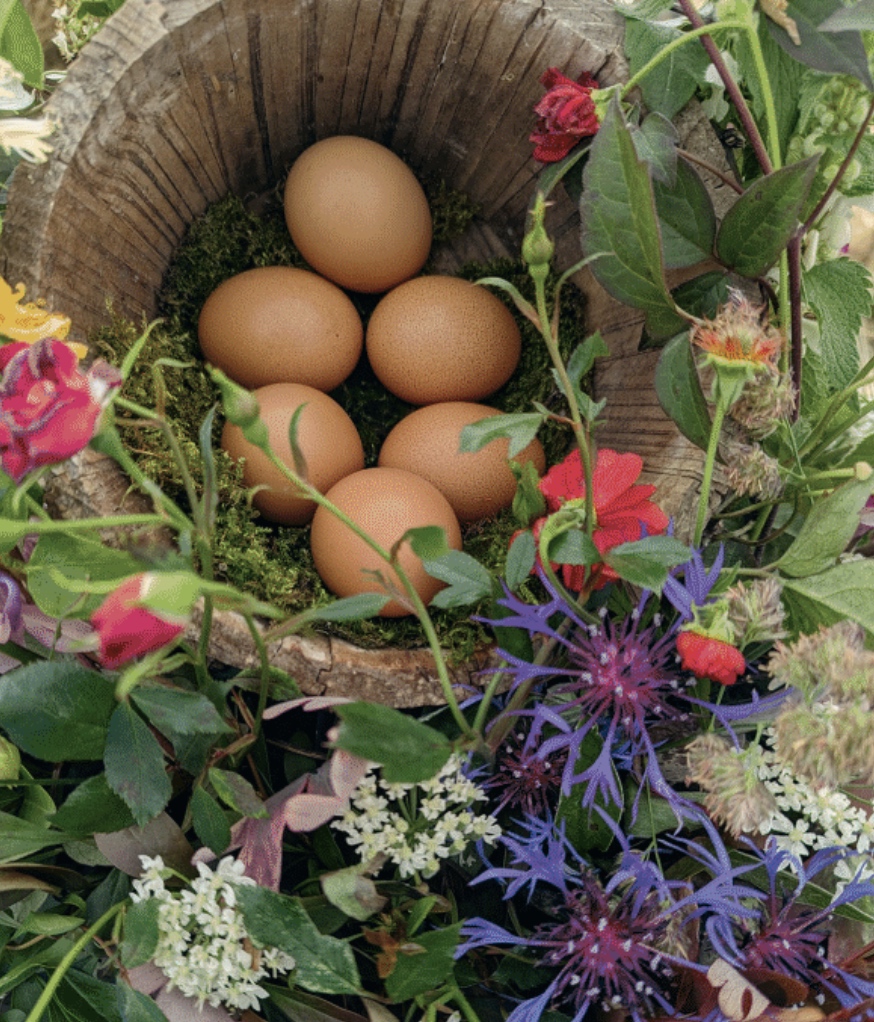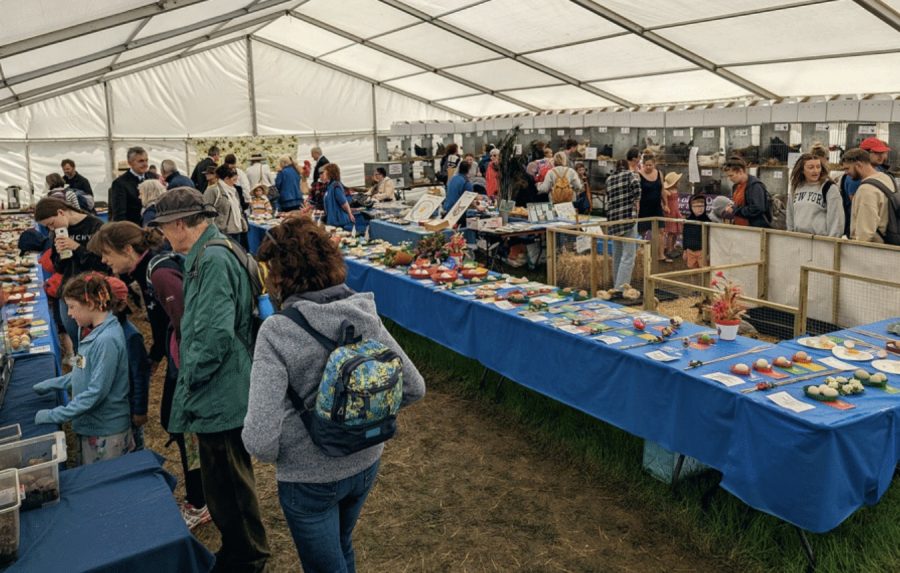Poultry vet, David Parsons, talks bird flu, red mite and a glorious outing to the Bath and West Show…
Fathers’ Day 07:00, my mobile rings. My son is on the line with those immortal words “you know that if I ring at this time, I need something”.
So much for Fathers’ Day. He’s just experienced the ‘joys’ of light mornings and backing on to a small wooded area. You guessed it. A fox came around. The flock of three is now a flock of two. In that sense very lucky because it could easily have been a flock of zero. The flock has now been moved and like most animals, doing very nicely in their new home, thank you very much.
Do they miss their friend? She was at the bottom of the pecking order so life will be a little different. Truthfully, I could not detect any signs of sadness or loss. Just carry on regardless. The combination of the fox attack and being rehomed constitutes a major stress.
For the laying hen, this could result in an egg being laid internally with the development of peritonitis. In this case, they were just left to explore their new surroundings in peace and quiet and so far, all is well.
BIRD FLU
Avian influenza has taken a bit of a back seat, news wise, for the last couple of months. The good news is that poultry gatherings which include waterfowl can now be arranged under the terms of a general licence (with effect from April 26th, 2024).
This does not mean that there is no avian influenza in the UK. It is still present in the wild bird population. In 2023, isolates were being obtained virtually weekly from a variety of wild birds. Mostly strain H5N1 but towards the end of the year, H5N5 was also detected. Moving into this year, even fewer detections were made in the first four months but H5N5 showed up again.
Since week 16, there have not been any wild bird isolates. The following is taken from the government website.
“The online reporting service for dead wild birds in Great Britain has been updated to make it easier to report the location and a wider range of wild bird species groups. Reporting helps understand the risk to different species groups, poultry, and overspill into wild mammals.
Reports are prioritised and not all birds will be collected. The APHA’s avian influenza in wildlife surveillance programme provides interactive maps and data dashboards on bird flu and wild bird mortality in Great Britain.
The situation is similar globally with isolates from wild birds being made in Antarctica, China, Spain, Iraq and Finland in the last three months. During this time, there have been poultry outbreaks in Australia, Indonesia and Korea.
CONCERN IN THE US
The new worry has been the finding by the U.S. Department of Agriculture (USDA) of H5N1 highly pathogenic avian influenza (HPAI) in dairy cattle. This outbreak may have begun in late December 2023 or early January 2024. At least one dairy worker is believed to have acquired infection from cattle. This manifested as conjunctivitis. A simple reminder that the closer the contact between humans and animals the more likely infections will spread from one to the other and back again. So far there have been no detections of this particular strain of virus in the UK or Europe.
Our legislation has been updated to reflect the increased likelihood that avian influenza virus can cause disease in mammals. In summary, we are in a quieter and relatively disease-free situation at the moment. The virus is evolving. Routine hygiene and management practices are now the norm. These must be targeted at minimising the risk of introducing any infection into your flock, minimising the risk of transferring infections from owner to poultry and vice versa and minimising contact with wild birds.
POULTRY ON SHOW
Attending the Poultry and Small Animal tent at The Bath and West Show was a wonderful experience. Given the weather towards the end of May, you will not be surprised to learn that I was advised to bring wellingtons. We had our very own large puddle or small pond down one side which over the three days did decrease in size slightly.
Fortunately, this was confined to the side of the marquee and did not present a problem to visitors walking or entering on mobility scooters.The Poultry Club Summer National Egg competition made for a stunning display. 77 classes were judged by Lady Radnor, the Rev. Danny Reed. and Mr. Benjamin Reed. Mr Antony Carter was the Poultry Club representative.

Eggs on display at a poultry show
Joe Merchant was the Chief Steward for the Poultry and Small Animals tent supported by the Salisbury Poultry Club and the Sign of the Owl Birds Pet Centre and Poultry Specialists. He ensured that this year was even more successful than last. Having live poultry, including ducks and geese, on show and for sale was a fantastic bonus. Yet again the display of snakes, frogs, spiders, stick and leaf insects was a phenomenal draw. Depending on the weather and what else was going on outside it was either feast or famine visitor wise. I would estimate that there must have been at least 100 people in the tent at the busiest times.
Visitors could not believe their eyes at the sheer beauty of the displays and the pleasure that those helping had in giving further information about the exhibits. I had not even got out of the tent at the end of play on the Saturday before Joe was asking would it be possible for me to give a talk or presentation on a poultry-related topic. I shall have to give this some serious thought. This is what I call forward planning. He is right though. Before you know it the Royal Bath and West 2025 Show will be upon us. Well done to everyone for making the tent such a success.
BEWARE OF RED MITE
I wrote this in a past article but it is still very important as the temperatures that we have had in recent days is just the stimulus needed for an explosive increase in red mite numbers. Do not wait for one of your hens to drop dead unexpectedly off her perch overnight because the microscopic vampires have bled her dry.
When it is dark, take a torch, LED lights do not seem to bother hens as much as the old tungsten bulbs. If you see a layer of mobile grey dust walking down walls or along. perches, that is likely to be red mite. They are only red when they have fed on your bird’s blood. Death of your hen is due to anaemia which is not as easy to spot in the live hen as you might expect. During the day, just lift pieces of caked bedding, look under straw or under roofing felt. You cannot miss them if they are there, a heaving mass of grey and red mites scrabbling to get out of the light in amongst a white to cream dust of mite eggs. Likely you will feel them on you as well. There are a variety of ways to treat these dangerous ecto parasites and often a combination of methods will be used.
There’s a whole rack of products at your local country shop. A poultry vet may also be able to supply other products and it’s worth a chat. It’s important to review the efficiency of whatever method you choose by constant monitoring. Take red mite seriously. The house itself needs a thorough clean, remembering red mite have a hard shell and can survive most things. Use a product that is recommended for red mite, normal products don’t usually touch them or their eggs and you’ll be back with a large population in no time.
This article extract was taken from the August 2024 edition of The Country Smallholder. Buy the full issue here.
To receive regular copies of The Country Smallholder magazine featuring more articles like this, subscribe here.
For FREE updates from the world of smallholding, sign up for The Country Smallholder newsletter here.








